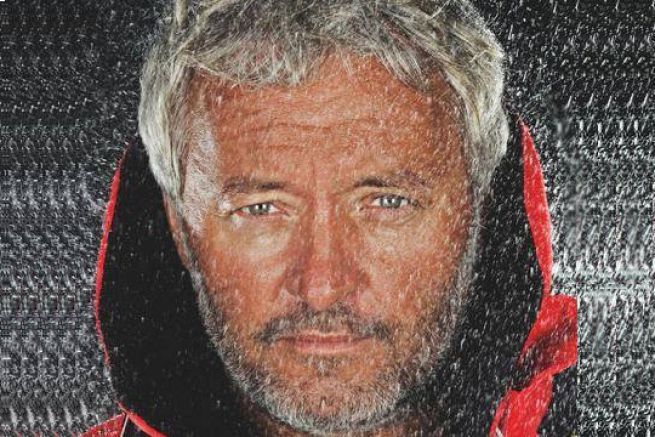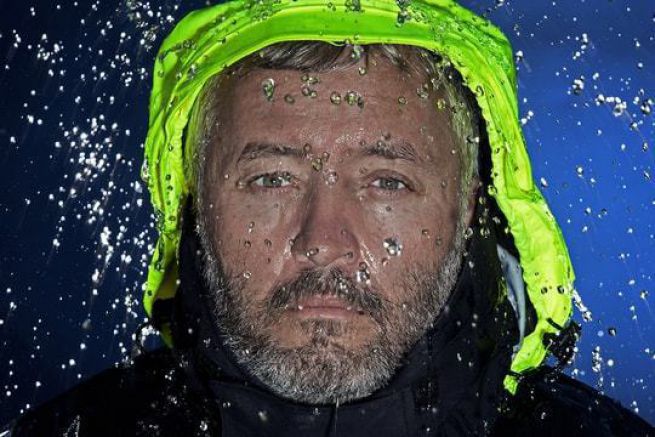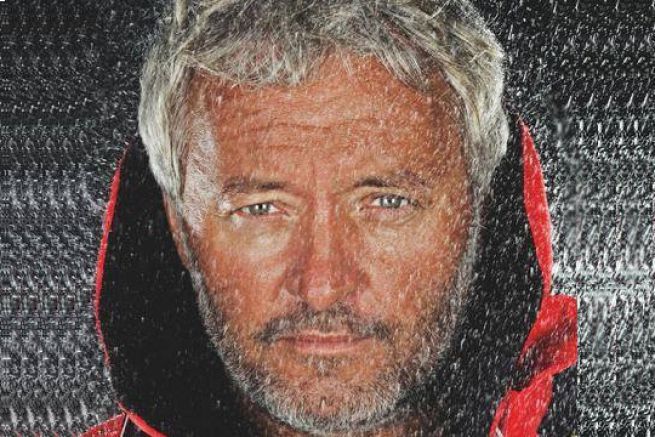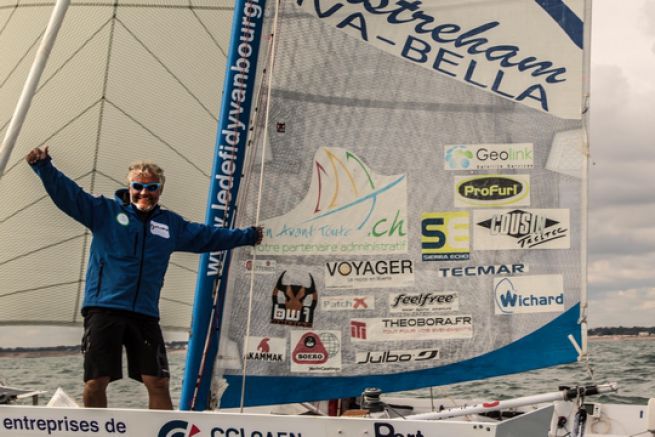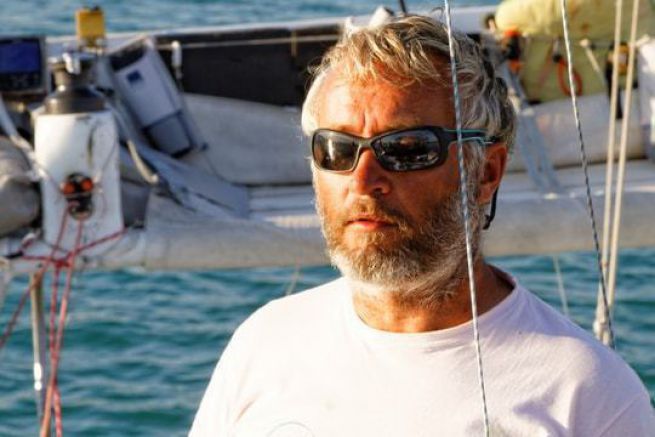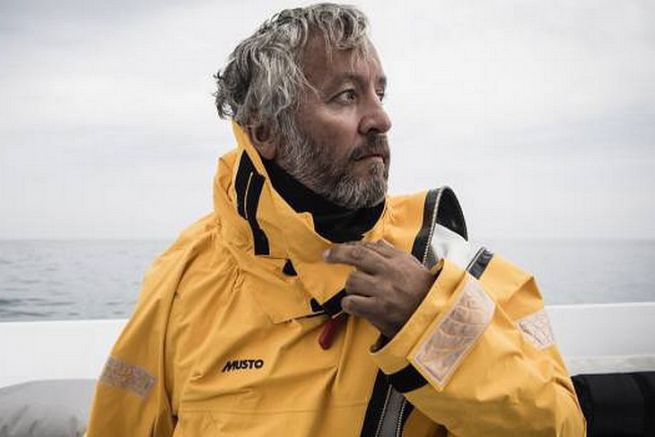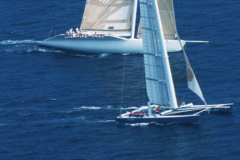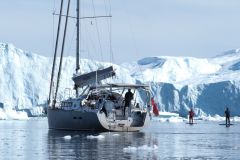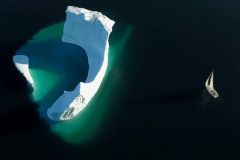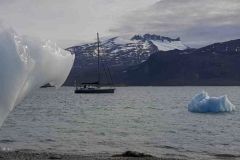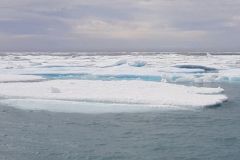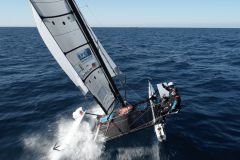Why embark on this challenge of the Northwest Passage?
I am well attracted to the Far North and the South, as are many sailors and navigators. We've already done regattas, offshore races and we want to see something else. With my round the world trip, I sailed a lot near the Equator. But the northern lands are really interesting.
And it is all the more interesting for this type of boat (Ma Louloute), because it is a complicated passage, where few boats sail each year. It's more like motorboats you see in that area. Sébastien Roubinet, on Babouche, had successfully completed this passage under sail, but in a habitable catamaran*.
The idea is to bring back beautiful images, to go sailing, to get closer to bears and marine mammals, because motorboats scare away all the fauna.
But with this challenge, we are also trying to formalize a record, that of the Northwest. The World Sailing Speed Record Council (WSSRC) validated the challenge. *1 As a result, we have two constraints: to put our foot down and not to land on the ice cubes, at the risk of getting stuck and wasting time.
What motivates you to take on challenges, such as your world tour or this Northwest Passage?
First of all, we have exceptional encounters! During my world tour, I enjoyed all the stages. We're on a real trip! I slept in a local house, I met real people. We are at the heart of the project.
When we're on a boat, if there's a storm, you take cover and wait for it to happen. Everything that happens to you, you have to live it, manage it..
With my world tour, I acquired a crazy experience to be able to achieve this new challenge. It sounds dangerous, but it's shorter than the round-the-world trip. And then the boat is ultra reliable now and it has proven its worth. Nothing is left to chance.
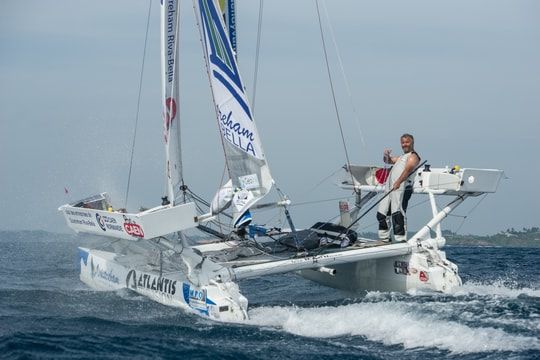
Credit: Yvan Bourgnon and "Ma Louloute" - credit: Nathalie Colloud
Your project is already well advanced?
It's already well defined, then we still have a long way to go to find sponsors. But we'll find out, I'm confident. The only uncertainty is whether this would happen this year or next, depending precisely on how long it takes to find the funding.
How will you cope with the cold?
We haven't thought about everything yet, but we're going to leave the boat as it is. We'll put a canvas over the benches, to keep the heat once inside, it'll be like a kind of tent.
And then Mike Horn (an adventurer) has already been on an expedition on the Ice floe, but he was on land. In a boat, the water overboard and you get soaked quickly, you have to change regularly.
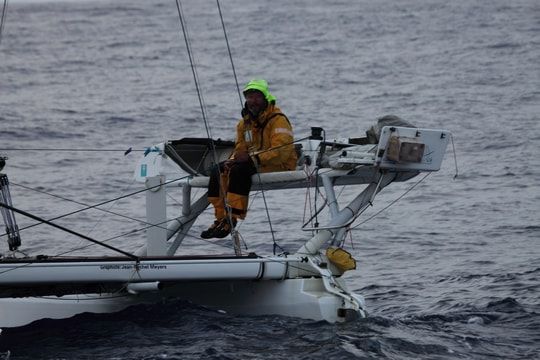
Yvan on his bunk, the place where he sleeps - credit: Jean Capdevielle
So the boat will not be modified for this adventure?
No, not at all, he's fine as he is. However, we will have to be vigilant, because it is a composite boat. You don't want to hit ice cubes at 15 knots, or it'll break! And you will also have to be careful not to get caught in the ice.
The advantage of the small boat (Ma Louloute is 6.3 m long) is that it is easier to slalom between the ice cubes, unlike the Babouche, which was able to go on the ice.
How much time do you give yourself to accomplish this challenge?
We plan to leave around July 10, but we will have to maintain a certain pace, as the passage between the ice opens for only 15 days/3 weeks. That would make the crossing between July and August. Sébastien Roubinet has remained completely locked up in some places.
On this challenge, we're going to try to switch to a sport catamaran, over a single season. Some spend it over several seasons.
What are the risks of travel?
Already the cold, which we will have to manage, but also the capsizing. With a sport catamaran, there is a risk of capsizing and there, we would be in a critical situation, since the water is freezing. And then, we must always be in action, in movement. We can't take cover and wait for it to pass..
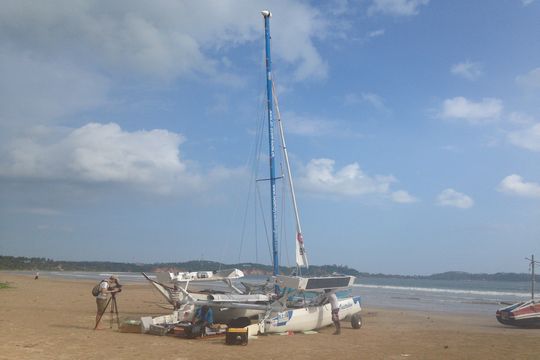
There will be two of you on this challenge, any particular reason for that?
On this challenge, we cannot stop, because we are putting ourselves in danger. We can't manage alone, that's why there'll be two of us on board. On the one hand, it will allow us to take turns sleeping, resting... And on the other hand, the timing is very tight. The waterway only opens for a few days and you should not drag along. So we have to set the pace, sail day and night and go fast. And with two, it's easier!
If the challenge takes place in 2017, I will leave with Gilles Lamiré, with whom I was on the Transat Jacques Vabre. We got along very well, he's a good warrior. If it's 2016, he won't be able to do it so I have a few tracks, but nothing official.
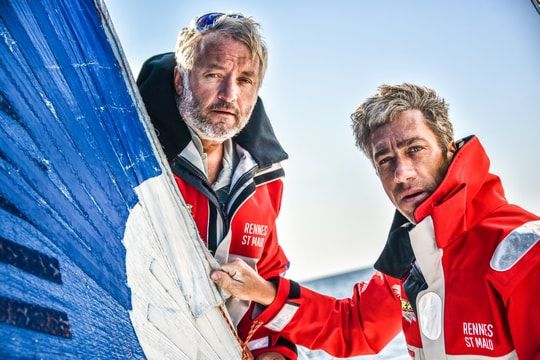
Yvan Bourgnon and Gilles Lamiré - credit: Xavier Bouquin
How will the departure go, you will be on stand-by on site?
For the departure, we will have to be there at the end of June, for a departure week between the first and the 15th of July. But it will all depend on the weather and the ice cubes.
Once in navigation, do you have a router on land?
We'll have the weather information before the start and nothing after. It is possible that we receive some SMS messages in the passage via a satellite phone, to possibly indicate to us the storms. But it's still to be seen.
Exactly, in the event of a storm, what happens?
If there's a storm, we have several options. If possible and there is an accessible side, we will anchor on the coast, or in a creek. Otherwise, we'll get into the cape or run away.
If you get stuck in the ice, you lower the mast and shrouds and wait for it to happen.
On my previous challenge, I am lucky not to have had to ask for help, despite all my difficulties. I've always managed on my own, so we're going to keep it that way.
Any other projects?
I have a project for a 100-day round-the-world tour against the winds at sea. I'll do it on a maxi-multihull alone.
* Sébastien Roubinet is an adventurer who completed the Northwest Passage in 2007. He left Anchorage on May 19 and sailed to Greenland on September 9, 2007, three months and 21 days of sailing. In this adventure, he was accompanied, in turn, by Anne Lise Vacher-Morazzani, Éric André and Boris Teisserenc.
For this challenge, Sébastien Roubinet sailed on Babouche (which he designed and built with Anne-Lise Vacher-Morazzani), a light and resistant ice catamaran, capable of sailing on the water and sliding on the ice.
*1 The World Sailing Speed Record Council (WSSRC) certifies sailing records.
